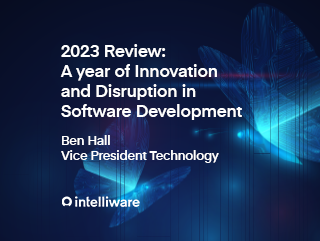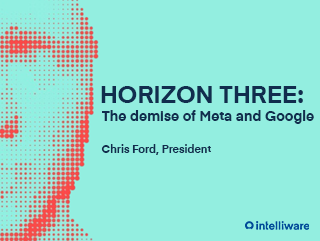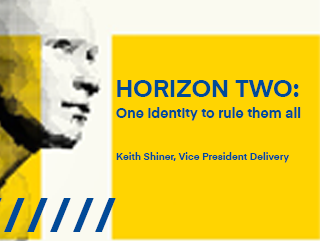
By Nick Dyment, Chief of Staff & Technical Director
Published: June 19, 2024 in Blog
The question of ‘how do I turn my idea into a product’ is one that we have answered for many clients and entrepreneurs seeking a development partner. Given the breadth of our experience in this space, we wanted to share an outline of how we approach this problem. This is for people who have a product vision, have done some market research, have enough confidence in their idea to invest in building it, and who don’t have the technical skills or know-how on where to start. Or perhaps, if you do know where to start, you need help finding the right partner for execution.
Intelliware has partnered with several early-stage start-ups to build their first product, be it an MVP to showcase the idea to investors, or to launch directly to customers and start testing product-market fit. Generally, these clients have four big questions that we will shed some light on here.
-
-
How much will this cost?
-
What technology approach should you choose?
-
What’s the development process like?
-
How do you actually “launch” a product?
-
1. How much will this cost?
One of the biggest questions non-technical founders face early on is “how much will this cost to get to market?” I love working with this question because it’s a chance to be creative and be a problem solver. While there is no one-size fits all solution to this, I’ll share some of the ways that I approach it using an example of a wedding DJ booking application.

At Intelliware, the cost is typically driven by the time required to design and build the product, and the size of the team required to do the work. And to figure our time and team, we need a pretty good sense of the work required to build the product, which means we need a pretty good idea of what the product is going to look like when we launch.
In some sense, this can be seen as a chicken and egg problem. I need to know the product design to estimate the cost, but since budget is often a constraint to the vision, a founder might want to share their initial product launch vision based on the cost. So – we need to work together and iterate through various options and permutations. I think this works best in a creative collaboration session where all parties agree to work together to bring the product vision and product development experience together and see if there’s a match.
Sounds great, but kind of vague? Let me provide an example. Let’s say your product vision was an app for booking wedding DJs. Here are some of the questions you should be prepared to answer to help figure out the cost to get this app made, and why they are important.
What’s the killer feature of the app?
- Is there a thought that will require us to invent something new (i.e., – read your mind to find a dream playlist), or use some existing technology in a novel way (i.e. combine you and your partner’s recent music history and find commonalities), or is it about simplifying stressful processes and it’s all about the user experience and not the technology?
Who are the users of the app, and how will they use it?
- It’s important to size the complexity of the app. And discover if there’s more to the solution, for example, if there is a support function to support clients or DJs, how does the support team get the information they need to provide support?
Will this be available on the web? Do you want to be in the app store?
- Maybe you have a great reason to be in the app store. But there are costs to that if we need to have a separate codebase for mobile, and limitations on technology choices as well if we want to keep it flexible. It’s your product and your vision though so we can explain the specifics in another blog.
Will this app be available across the globe? Which countries and languages does it need to be in?
- This is important to help size up the infrastructure needs, and the testing effort, and the timeline to launch if we need the content finalized in more than one language
What’s the business model for your app?
- This impacts if and how you will accept payment, which adds complexity. For example, a freemium model based on buying tokens to place ads? Or will the business take a cut of each booking? Or charge an annual subscription?
Working through these questions and reaching an understanding of the key use-cases in the app for all users, will start to create a picture of what we are making, and from there we can estimate the team size, duration, and the cost.
2. What technology approach do you choose?
As the motivated founder of this DJ booking company, you are also becoming the founder of a technology company. There are 3 approaches you could take to move forward with the development of the software.
-
-
Staff up and build it yourself.
-
Manage outsourced development.
-
Partner with a design/build company like Intelliware.
-

There is no outright correct answer to this question as it depends on your short- and medium-term goals.
To staff up a team would mean there’s someone within the founder’s group with enough technical acumen to make informed hiring decisions, and sufficient capital to add people to the payroll. Intelliware has stepped in as a temporary CTO for some clients to help in making critical first hires in the past. A dedicated development team puts you in more control and would be less expensive on a per-person cost but has the overhead of payroll and management and the longer-term employee commitment.
Outsourcing development keeps the founder in control of the vision, and typically trades off higher development costs with reduced risk and overhead. If the goal is to get a prototype to investors before raising more money, this can be a good option. Outsourcing can also be a good fit if the vision of the app is solid, and the goal is to launch direct to consumers and find the shortest path to revenue. The critical element in success for outsourcing development is the willingness and confidence for the founder team to manage the development team and provide them with specific enough requirements to have them build the correct product, and for the development parts to excel at communication
At Intelliware, we partner with founders and product visionaries directly with the intent to deliver the product from the vision, launch to market, and then transition to a new working model. The goal of this relationship is to support the start-up in building their own development and technical capabilities, but the first task is to use our design and build skills to launch the first iteration of the product to market. For example, for the hypothetical DJ booking company, Intelliware would work with the founder on early prototypes in Figma and some user research, support development of the application and initial infrastructure to run it on. Prior to general release, we would help the founder with their first few technical hires by writing job descriptions and interviewing, and ultimately cross train these people to take over the day-to-day operations of the booking software. Intelliware would be around and available to continue to support, but, like parenting, our goal is to have the DJ booking firm grow into a thriving technology company under its own power and direction.
3. What’s the development process like?
For people without experience developing software the process might seem inaccessible and daunting. While not all experiences are the same, I want to give you some perspective based on previous start-up clients who have partnered with Intelliware. At a high-level there are 3 phases to launching a product with a development partner. Scoping, Delivering, Preparation for production. And what the dev team needs from the founder and/or product owner will change slightly through each phase.

Scoping
In scoping, there is a deeper dive into the estimating and sizing we did before. The goal isn’t to get all the details, but it’s really to understand the priority of the work needed to be delivered, to write it down with as much detail as possible and put a guesstimate of the effort beside it. The product owner’s role is critical here to describe to the delivery team what they want. Do all the answers need to be known? Not at all. In fact, knowing the things we don’t know is also a valuable output from this phase because that queues up work for the product owner to do when the dev team starts coding in the delivery phase. This scoping phase shouldn’t take too long, maybe 2-4 weeks, and ensures that the whole team understands the product vision and what the product should ideally look like on launch day.
For example, in our DJ software, we know that getting paid is the most important feature for the business, but they might want to demo the software to potential investors in 2 months and the investors probably aren’t going to be wowed by watching a checkout flow. So –it’s important that the dev team know about payments and how they work, but we won’t build it first because that’s not the delivery priority. If we skip this phase of looking holistically at the product however, the dev team might not be thinking about the need for payments and adding it in later could involve some redesign if not planned for up-front.
Delivering
Once the scoping is done and an initial backlog of work items is set, it’s time to get down to business. The dev team will start chipping away at the product and the product owner’s job is to continue to refine the product vision, answer the team’s questions, and help the team document the next batch of features they need to work on. This is the largest phase by unit time and represents the bulk of product development lifecycle. At Intelliware we tend to structure work in 2-week sprints, with set meetings during each sprint that force the habit of asking and answering questions, and with the intention of progressively working towards launching the product. So, the need for the product owner is consistent but perhaps not as intense as the first scoping phase. The critical moments during delivery come when there is a need to make a trade-off, and often the ability for a product owner to be empowered to make tough decisions quickly can make or break the success of the product development.
For example, imagine the product owner of the DJ app wanted to autogenerate an avatar for everyone that wears clothes aligned to their musical taste preferences. This would be a cool feature to give the app more appeal. It’s a cool idea, but the dev team can’t find a third-party API or package to do this easily and would need to make it. They suggest it would take 3-4 person-weeks to build it. Is it worth it? That’s for the product owner to decide, and the team would help give them all the information necessary to make an informed decision – such as impact to other parts of the build, timeline, and cost.
Preparation for Production
While it’s never too soon to think about product launch, the team probably will start thinking seriously about it as the product development starts to mature. On the technical side this means building the production environment(s), making the logging and telemetry more robust so the support people (remember them!) can have the information needed to do their jobs in production, ensuring proper access controls are setup for production data, and organizing any third-party security testing that needs to happen. For the founder or product owner, they need to be moving towards their version of launch. Perhaps it’s a friends and family soft-launch, or maybe it’s a big marketing blitz global go-live, or perhaps it’s somewhere in between. To support the dev team, there should be a formal checklist of what the app needs to do before launch, and confirmation from the start-up team that it does what was promised. Now – this shouldn’t be a surprise since the team has been working as one for a while to launch the DJ app, but this stage of the project is when nerves set in and sometimes tempers can flare as the anxiety of launching a new product is felt. That’s normal! This is scary, and exciting, and a good development partner should also act as a bit of a coach in this phase.
4. How do you actually “Launch” a product?
Congratulations, your product is out the door, and you are getting some real feedback. What comes next can vary wildly but typically it would involve your development partner providing at a minimum some support after the product is launched and some cross-training to the first technical staff hired by the start-up.

Or perhaps the product launch was a true minimum viable product and there is a planned 2nd or 3rd stage of development to come in addition to supporting launch. With good planning it’s all possible, and now it’s up to the founders and product visionaries to find customers and delight them.
In conclusion, figuring out how much building a product should cost is an iterative process involving a product visionary and experienced technical leads that can be teased out in a small workshop. The development process has a few phases but relies on the product visionary to communicate what they want to the development team, either in-house or to a partner like Intelliware, and to be able to make informed decisions quickly to guide development priority.
At Intelliware, we have helped start-ups launch products by being their design and development partner, by providing additional development support to augment the start-ups existing teams, and helped to hire the first few technical hires so the start-up can build and launch their product on their own. Whatever your vision is, we would love a chance to talk with you about how we can work together to bring your vision to life.

